Condensation inside the car is something that affects all vehicles. We’ve put together a quick primer on what causes car condensation and how to reduce its effects.
What is condensation?
Condensation forms when warm air containing moisture comes into contact with a cold surface, such as your car window. When the warm air meets the cold air, the moisture in that warm air condenses on to that cold surface.
On a car windscreen, this moisture takes the form of hundreds of tiny water droplets that, from a driver’s perspective, looks like a fog.
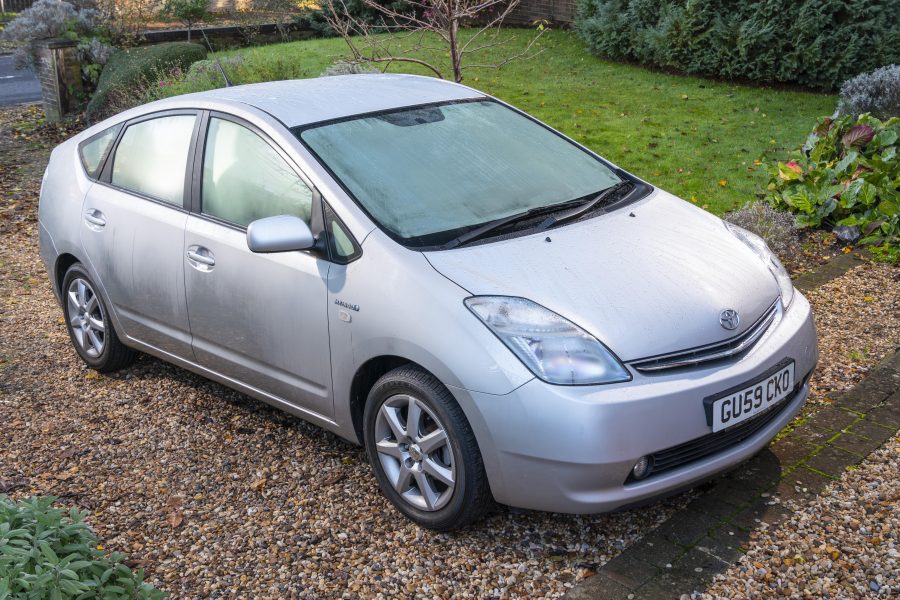
What causes condensation inside a vehicle?
One or a number of the following things could cause condensation inside the car:
- Wet clothes/shoes/pets – water on these items will slowly evaporate into the cabin air or, if heavily soaked, cause the seats and carpet to become wet
- Breath – when you or your pets breathe, that exhaled air contains a large amount of water vapour which is released into the cabin
- Water ingress
- No circulation of fresh air
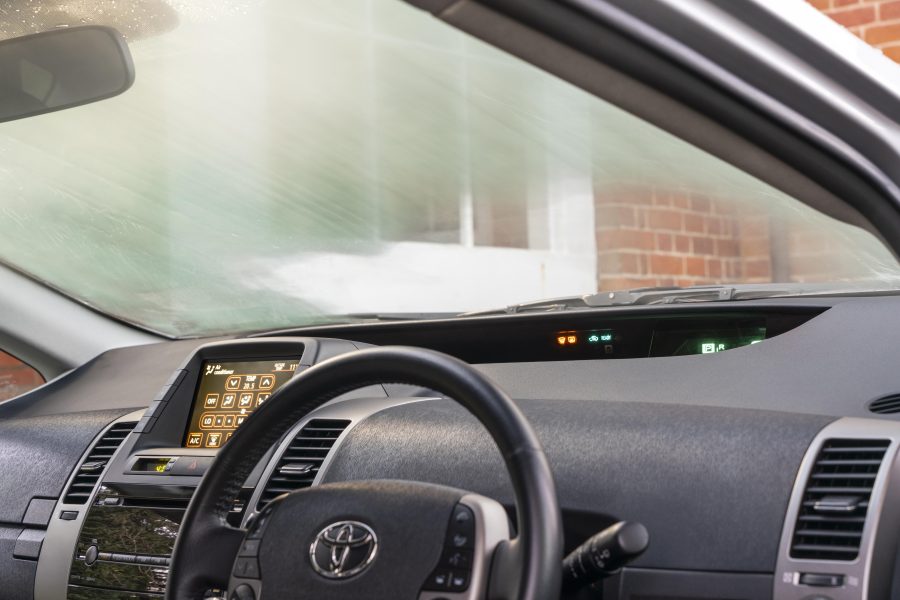
Are new cars more prone to condensation build up?
Modern cars have much better seals, meaning they tend to be more water tight. This means that it is more difficult for any moist air trapped inside the vehicle to escape. If movement is created with a fresh air source, moisture levels will decrease.
Increased insulation also allows modern cars to stay warmer longer after being parked; the longer the air inside the vehicle is warmer than the air outside, the more condensation will appear on the cold windows of the vehicle.
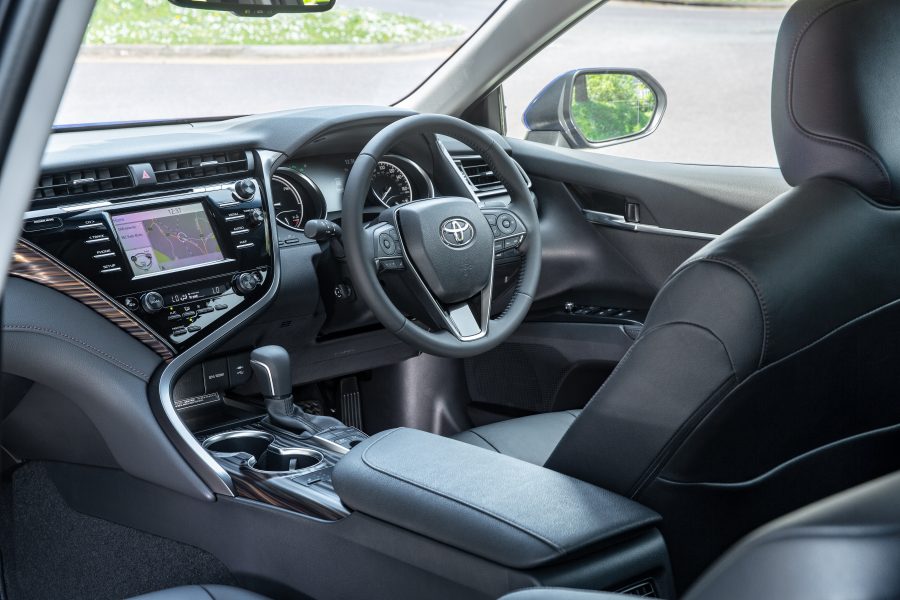
How can I reduce condensation in my car?
As condensation collects in the air inside the cabin, the level of moisture will increase. If this air is not vented to the outside then the condensation problem will increase.
The most efficient way to remove moisture from the air is to use the vehicle’s air conditioning system. This system draws air from the cabin through an evaporator, which causes moisture in the air to condensate in a controlled way and drain out of the vehicle.
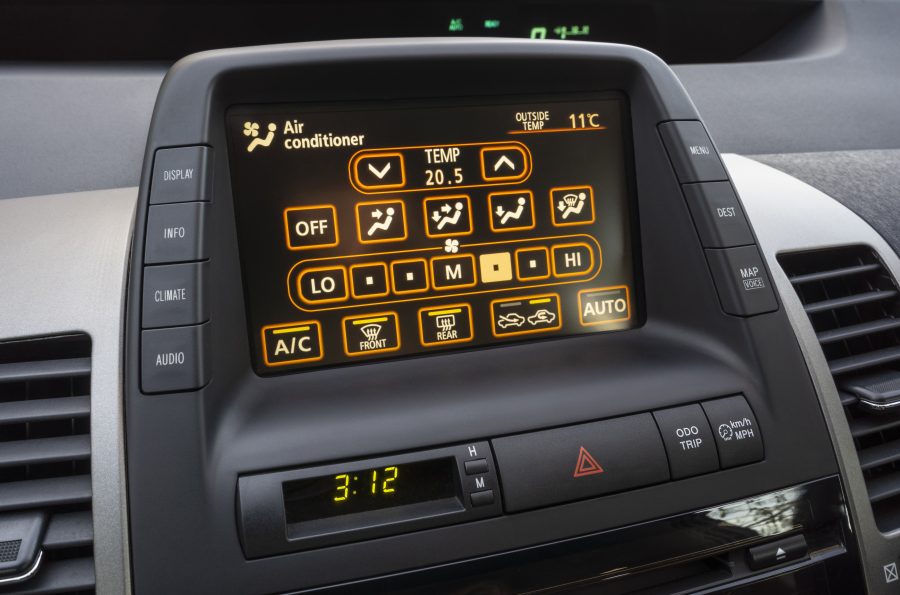
If the cabin air is not regularly refreshed then condensation will accumulate, as the moisture-rich air will not be removed. However, you can force this by changing the re-circulation feature from internal to fresh air.
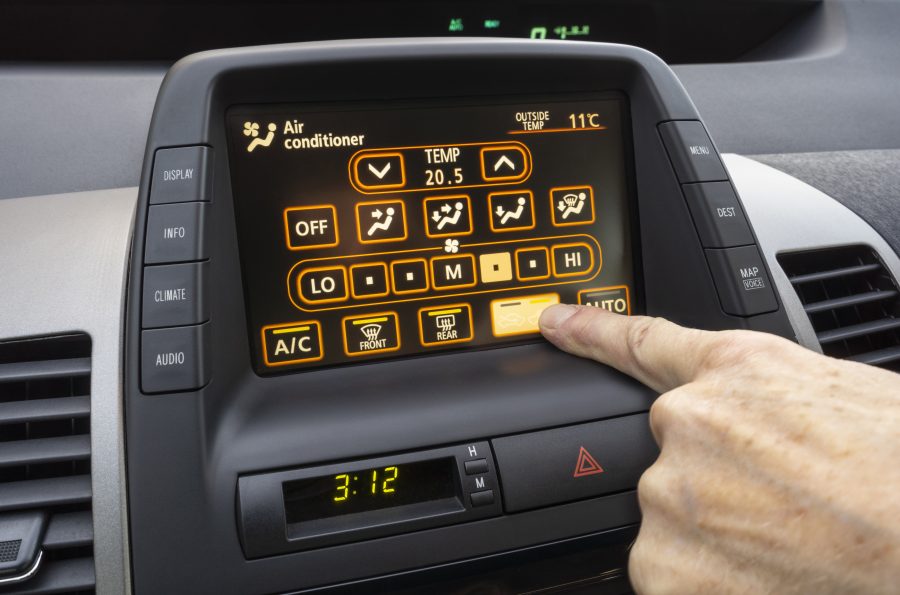
Don’t forget the demister function, either. It’s designed to quickly clear the windscreen of condensation and works by blowing air directly over the surface, which has the effect of drying the inside of the glass.
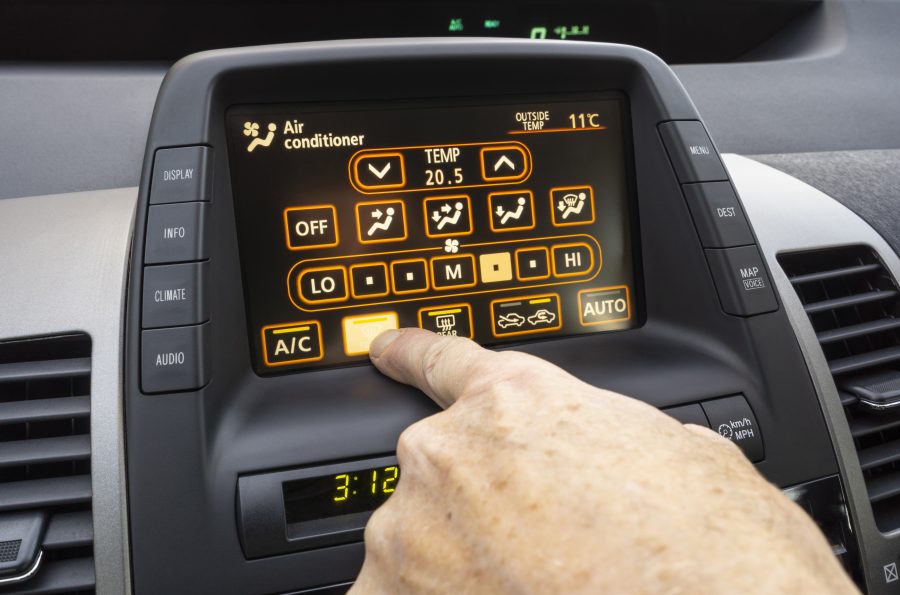
If the features of the heater and air conditioning system are used as above, then the amount of condensation inside the vehicle will be reduced. However, it will never be removed – moisture will always be present inside the vehicle.
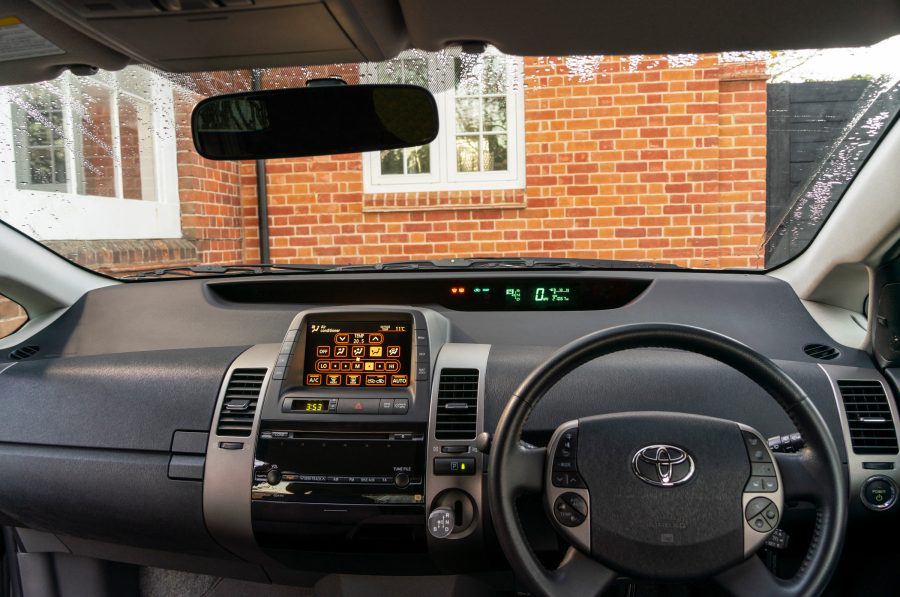
Believe it or not, one of the key ways to keep condensation at bay is by simply keeping the insides of windows, particularly the windscreen, as clean as possible. Thorough cleaning of the glass will lessen the likelihood of condensation forming, and ensures that any that does form is efficiently dried by the demisters.
Check out our official eBay store for useful accessories
You can also buy a car dehumidifier bag. This is a small bean bag full of silicone balls that sits on the top of your dashboard and soaks up moisture from the air inside your car at all times.
Read more: Toyota tyre pressure and size guide
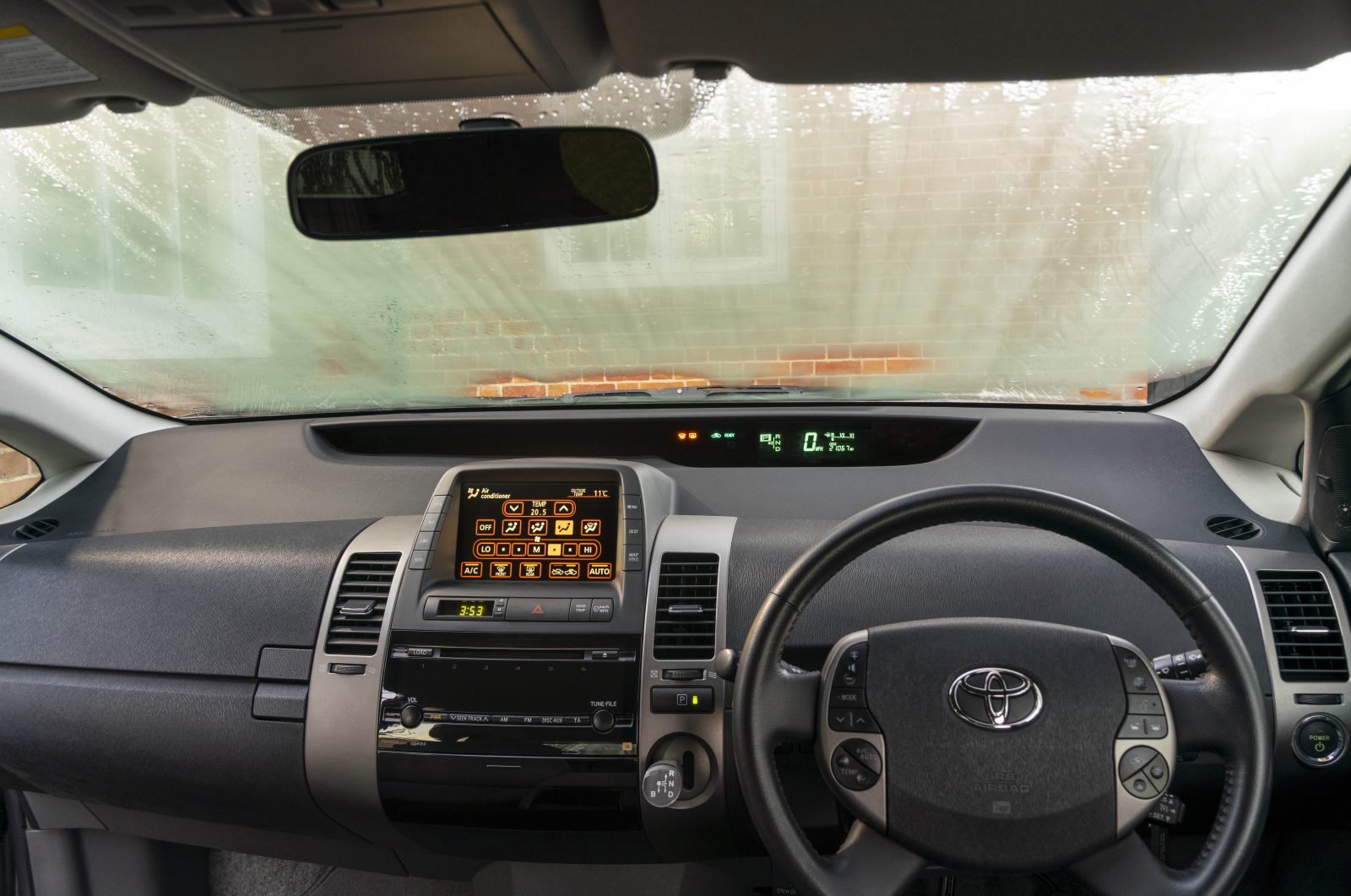


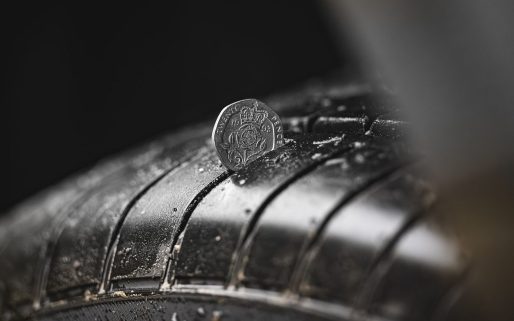

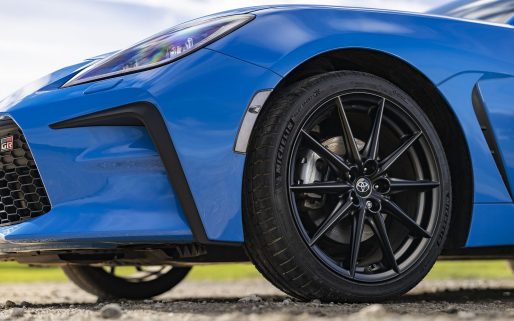

Hi Toyota I would love to know why and think it’s a shame that the 4.0 V6 petrol Land Cruiser was removed from the UK market before the 150 series Land cruiser was introduced.The 2.8 and 3.0L diesels don’t feel powerful and quick enough for a vehicle of this size, weight and capability. I think Toyota should seriously consider bringing the 2.4 petrol hybrid Land Cruiser to the UK and Europe. it would offer the performance and efficiency needed to satisfy traditional and eco-conscious buyers.
Nearly all other toyota models in the uk are in petrol hybrid variants, so why not the Land Cruiser? The 2.8 diesel and diesel hybrids (coming in 2025) are efficient but lack the power I feel lots of buyers need. The 2.4T hybrid IFM Land Cruiser could bridge the gap, offering performance, similar efficiency to the non hybrid diesel and would probably comply with European emissions regulations, appealing to a a wider range of customers.
Hi Zayad, thanks for your comment.
We’ll pass your suggestion along to our team.
Thanks,
I bought a new Toyota Yaris Cross in February 2022 and shortly after, when the temperatures hit minus degrees, I had problems with the inside of my panoramic roof icing over. It was so bad that when the car warmed up the water would drip onto the drivers and passengers! I tried opening the windows to let the hot air out at the end of a journey, a dehumidifier bag and always run with the AC on fresh air. It has taken two Toyota garages almost 3 years and they still cannot sort the problem. It is going in again to my local dealer for an ‘indefinite period’ so they can look at the problem again, but their courtesy car is going to cost me £12 per day to cover the insurance which is a rip off when the car has shown this problem since new. I wouldn’t mind so much if Toyota covered the cost of the insurance. I have been told that this needs to be solved before the 3-year Warranty runs out. It looks like Toyota have a general issue with excessive condensation in most of their cars – perhaps the rubber seals are too good?!
I have a 2008 Yaris and it’s always had terrible issues with condensation. I was hoping the new cars wouldn’t have this problem. The amount of time it’s been looked at and they never find anything. Sorry to hear you have this issue. It can be pretty scary when driving and it happens and nothing helps to clear it.
I’ve got a Toyota Aygo 2013 and the weather seals are a nightmare. I’ve never had any problems with this in any other model of cars. Didn’t know it was possible!! How can Toyota have these cars for the roads with known issues? My grandchildren are in the car a lot as I use it to get them from school rather than using a bigger vehicle. I’m quite disappointed with it and then the exhaust!
Hi there,
We’re sorry to hear about this.
As we’re sure you can appreciate, this is difficult for us to advise on virtually.
Please contact your nearest Toyota Centre for further assistance.
Thank you.
I have a 2018 Avensis 1.6Diesel which is the 4th one iv’e owned. Recently i have got the warning message ‘check parking brake system ‘ . The car has been in the garage 3 times for diagnostics and replacements of parts costing hundreds so far but the fault always returns. I understand that the Avensis was recalled to rectify this fault some years ago. Can you please advise me what the fix was for this so that I don’t carry on wasting my money on unnecessary parts.
I did try my local Toyota dealer but once the young lady on the service desk asked me if I had left the car out in the rain I walked out as I lost all confidence in them. Please help !
Hi David,
We’re sorry to hear about this.
As we’re sure you can appreciate, this is difficult for us to advise on virtually and we are also not technically trained to do so.
You are welcome to seek a second opinion at another Toyota Centre if you are not confident with your current centre.
Thank you.
How can I clean a egr on my Toyota Corolla 2006 without taking it out
Hi Beth,
Thanks for your question. We’d always recommend taking your vehicle to your nearest Toyota Centre for their expert advice.
Many thanks,
Toyota UK
I have a 2 year old Toyota aygo with 2360 miles on the clock today I had a 2 year full service and both rear shock absorbers need replacing how come
Hi Jea,
Thanks for your comment.
Your local Toyota Centre would be best placed to advise on this.
We hope this helps.
Thanks.
I have recently purchased a Yaris hybrid when locking the car a short while later on my t app it comes as a alert please check rear seat any ideas?
Hi Adrian,
Thanks for your query, however we are unable to assist you without seeing the relevant diagnostic information.
We would recommend that you visit a local Toyota centre for a technical inspection: https://brnw.ch/21wVoqQ
Many thanks,
Toyota UK
Both my shopping and my dog weigh enough to set off the rear seat alerts on my new Yaris Cross. I have tried to overcome this by using ‘plug in’ dog straps so my car thinks my ‘passengers’ are strapped in. I have always preferred to use dog harness’s which strap over the head-rest hence the need to fool the system.
Our 2017 Toyota Auris is not the best when it comes to keeping the windows condensation free, yes we have used the front quick demise and the air con but this leaves us cold in the car unless we keep turning these settings off to keep warm, help me please to enjoy keeping warm and condensation free in our Toyota?
Hi Derek,
Thank you for your honest feedback. We take the voice of our customer very seriously.
We would recommend consulting your local Toyota dealer, who should be on hand to assist you: https://www.toyota.co.uk/
If you have any further questions, please do not hesitate to ask.
Many thanks,
Toyota UK